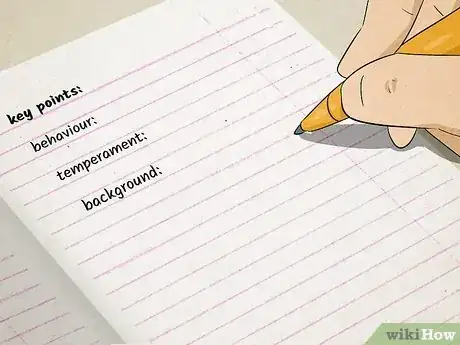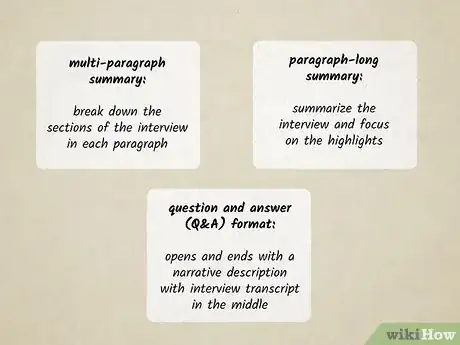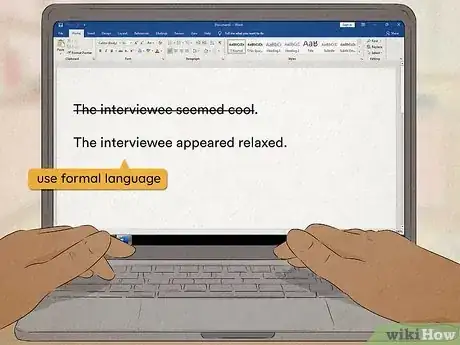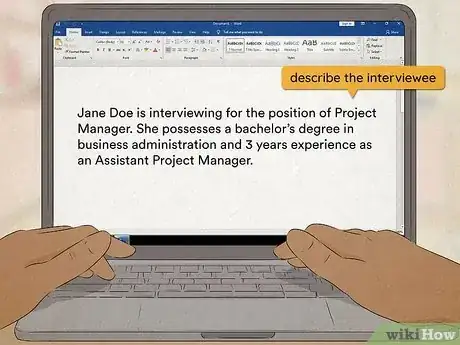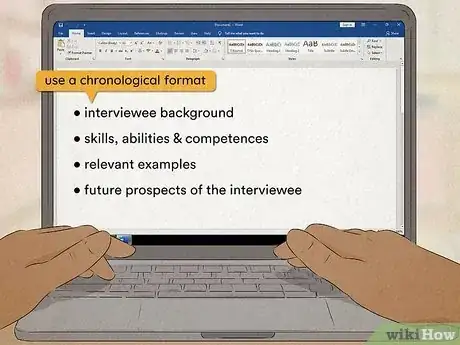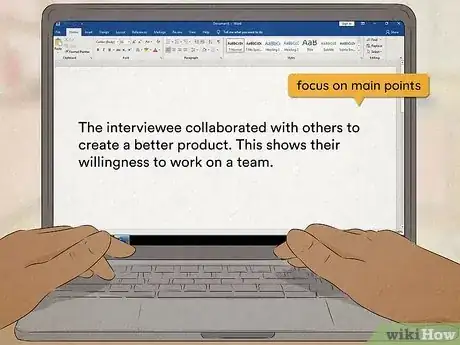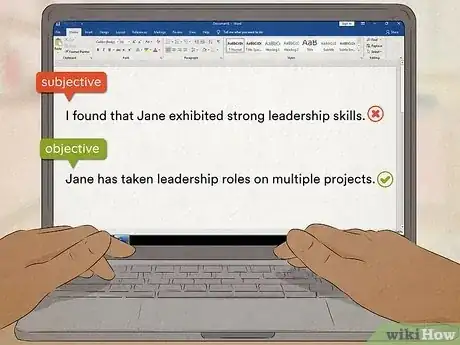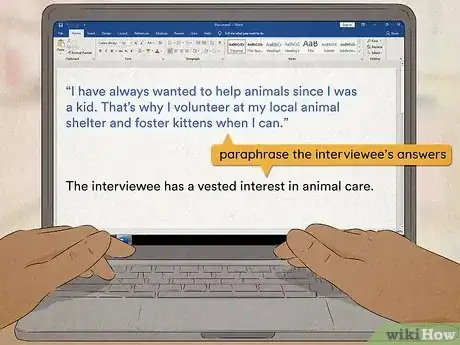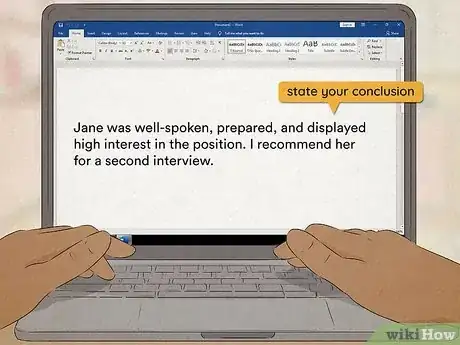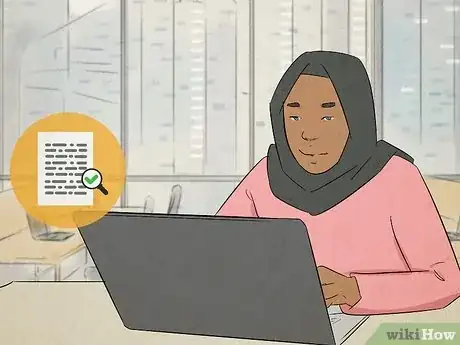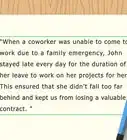This article was co-authored by Richard Perkins and by wikiHow staff writer, Krysten Jackson. Richard Perkins is a Writing Coach, Academic English Coordinator, and the Founder of PLC Learning Center. With over 24 years of education experience, he gives teachers tools to teach writing to students and works with elementary to university level students to become proficient, confident writers. Richard is a fellow at the National Writing Project. As a teacher leader and consultant at California State University Long Beach's Global Education Project, Mr. Perkins creates and presents teacher workshops that integrate the U.N.'s 17 Sustainable Development Goals in the K-12 curriculum. He holds a BA in Communications and TV from The University of Southern California and an MEd from California State University Dominguez Hills.
There are 8 references cited in this article, which can be found at the bottom of the page.
This article has been viewed 8,756 times.
After conducting an interview, you may find that you need to share the information in a quick and easy way. In comes the interview summary, a written statement that briefly covers the major points you discussed with your interviewee. Interview summaries are handy for oral histories, job interviews, informational interviews, and much more, but how do you create one? We’ve created this comprehensive guide to help you summarize an interview. Scroll down to get started!
Things You Should Know
- Take another look at your interview notes and recordings as a refresher. Writing down a list of major points can help you plan your summary.
- Pick a format that will let you summarize information most efficiently. Longer interviews will likely need a longer summary than shorter ones.
- Only include important details that connect to the major theme of the interview. Summaries don’t need a lot of elaboration.
Steps
Review the interview.
-
Taking another look at the interview will refresh your memory. Depending on the time it took to give the interview, you may have forgotten some important details. To make sure you have everything correct, look over any notes or recordings you’ve taken before you start writing your summary.[1] X Trustworthy Source University of North Carolina Writing Center UNC's on-campus and online instructional service that provides assistance to students, faculty, and others during the writing process Go to source
- Pay special attention to any repeated themes or ideas your interviewee brought up. If there’s something they really wanted to get across, that should be highlighted in your summary.
- If you’ve interviewed more than one person at once, make sure you have each answer attributed to the correct person.
Make a list of key points.
-
Gather your thoughts with some prewriting. Write down the most important takeaways from the interview. Make short bullet points about major themes focusing on the who, what, and how. Having a list to check can help you visualize where to go with your summary.[2] X Research source
- Make notes of how they behaved, their temperament, their background, and any other points relevant to who they are.
- Think about what they actually said, rather than your interpretation. How do the answers connect to the topic of the interview?
- Look at the manner your interviewee answered your questions. Were they direct and to the point? Friendly and open? Did they evade anything?
Pick the format of your summary.
-
The format of your summary determines how you write it. Depending on what’s required, you may have to fill out a template, write a 5-sentence paragraph, or complete a multi-paragraph short essay. Pick the format that will let you best summarize the interview.[3] X Research source
- For longer interviews, a multi-paragraph summary is a good choice. You can break down certain sections of the interview in each paragraph and ensure no major points are missed.
- The length restriction of a paragraph-long summary will make you focus on the highlights only. If you are preparing the summary or multiple summaries to help streamline a hiring process, for example, choose this option.
- The question and answer (Q&A) format is also an option. This style opens and ends with a narrative description but reproduces the entire or parts of the interview transcript in the middle. Many interview articles found in magazines take this format.
Adjust your tone to your audience.
-
Choose words that will resonate with your readers. Keep in mind who will be reading your summary before you start writing. If your reader is expecting a certain level of formality, as is likely the case for a job interview summary or an academic oral history, be sure to choose language that matches that expectation.[4] X Research source
- ”The interviewee seemed cool,” is informal. On the other hand, “The interviewee appeared relaxed,” makes a similar claim but uses more formal language.
- Be aware of connotations in the words you choose. Although words like “picky” and “selective” have similar meanings, the former has a more negative connotation than the latter. Choose more neutral phrasing when writing your summary.
Describe the interviewee in the introduction.
-
Open your summary with who you interviewed and why. Your future audience will want to know the purpose of your summary, so start off strong by giving context to the interview. State the name of your interviewee, relevant background information, and the reason you interviewed them.[5] X Trustworthy Source University of North Carolina Writing Center UNC's on-campus and online instructional service that provides assistance to students, faculty, and others during the writing process Go to source
- ”Jane Doe is interviewing for the position of Project Manager. She possesses a bachelor’s degree in business administration and 3 years experience as an Assistant Project Manager.”
- Appearance-related details are most likely not necessary except in certain circumstances. For example, in a celebrity interview summary, your audience may want to know what they were wearing.
Order the remaining information by relevance.
-
Talk about the most important details first. How you order the information in your summary will tell the reader what to care about. If there is a point from the interview you’d like to emphasize, mention it earlier in your summary after your introduction.[6] X Research source
- If you find your points are equally important, use a chronological format to organize your summary.
Focus on main points rather than small details.
-
Including every detail will make your summary too long. To keep things brief, only mention the central points of the interviewees responses and any relevant observations. Any sidebar conversations or anecdotes will add length to your summary.[7] X Research source
- The main points should connect to the topic of your interview. Consider how your interviewee’s answers reflect the position you’re looking to fill, the thesis of your oral history, the movie they’re promoting, etc.
- In a paragraph-long summary, sum up the point in a sentence. For example if you asked about teamwork, you can summarize their point as “The interviewee showed teamwork skills during X project,” without further elaboration.
- Alternatively, in a multi-paragraph summary, you have more room to summarize both an anecdote and the main point. Your statement about teamwork could be, “The interviewee collaborated with others to create a better product. This shows their willingness to work on a team.”
Make objective statements.
-
Write without adding your own thoughts. To present the interview in the most honest way, describe what happened without exaggeration or personal opinion. A summary shouldn’t include any outside reactions or analysis.[8] X Research source
- A statement like, “I found that Jane exhibited strong leadership skills,” is subjective because it expresses a personal opinion. Fix this by stating how Jane exhibited strong leadership skills. Consider: “Jane has taken leadership roles on multiple projects.”
- ”John always shows a lot of care for his community,” is a subjective statement because “always” can be vague and an exaggeration. Instead, opt for “John shows his care for his community by volunteering and planning events.” This statement is more clear and can be backed up with facts.
Paraphrase the interviewee’s answers.
-
Use direct quotes sparingly to keep things succinct. The interviewee’s words can be included to give a fuller picture. However, direct quotes can add too much length to your short summary. To prevent this, paraphrase. Paraphrasing is shorter but still gets the statement across, making it a better option.[9] X Research source
- Take the following statement: “I have always wanted to help animals since I was a kid. That’s why I volunteer at my local animal shelter and foster kittens when I can.” This can be paraphrased as “The interviewee has a vested interest in animal care.”
- ”In 5 years, I see myself taking on more responsibilities and leading a team,” can be paraphrased as “The interviewee plans to take more leadership roles in the future.”
- To keep your summary as short as possible, you may not need to paraphrase either. If what your interviewee said can be wrapped into a certain skill or characteristic, write that instead.
Write the conclusion.
-
Briefly sum up the major takeaways from the interview. To close out your summary, state what you’d like the reader to leave knowing. Consider why you conducted the interview in the first place and base your conclusion on that. This can also be where you offer any recommendations or opinions, if necessary.[10] X Trustworthy Source University of North Carolina Writing Center UNC's on-campus and online instructional service that provides assistance to students, faculty, and others during the writing process Go to source
- If relevant, mention any impressions you’ve had. Did you find the interviewee well-prepared? Are there any concerns on your end?
- For a job recommendation, you may finish with, “Jane was well-spoken, prepared, and displayed high interest in the position. I recommend her for a second interview.”
- Likewise, for an oral history project, you might write “Mr. Jones was clearly proud of his city despite its flaws.”
Proofread and revise after you finish.
-
Add some polish by looking over your words. Once you have completed your summary, comb through it for any mistakes or typos. Make sure you actually wrote down what you wanted to write down. An error-free summary will show your professionalism and strong writing skills.[11] X Research source
- Automated spelling and grammar checkers can still make mistakes. Reread the summary yourself for the most thorough revision.
You Might Also Like
 Nail the Answer to “What Do You Bring to the Table?”
Nail the Answer to “What Do You Bring to the Table?”

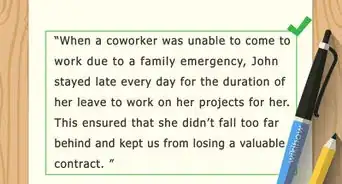
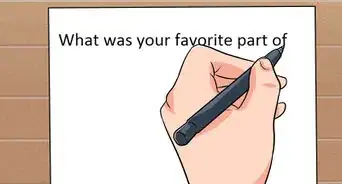



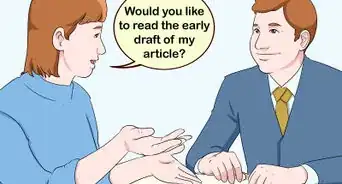
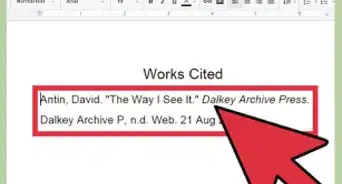
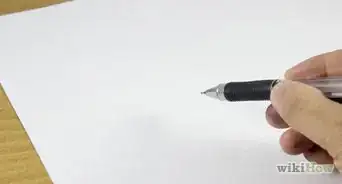

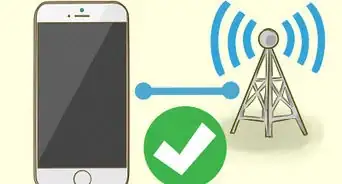
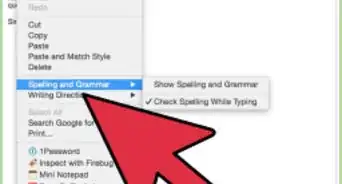
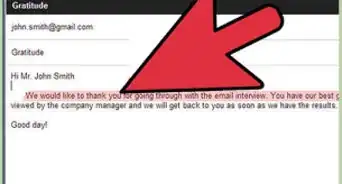
References
- ↑ https://writingcenter.unc.edu/tips-and-tools/oral-history/
- ↑ https://writing.ku.edu/prewriting-strategies
- ↑ https://libguides.randolph.edu/summaries
- ↑ https://scholarlyoa.com/right-tone-for-writing/
- ↑ https://writingcenter.unc.edu/tips-and-tools/oral-history/
- ↑ https://www.esc.edu/online-writing-support/resources/academic-writing/process/shaping-information/ordering-information/
- ↑ https://writingcenter.uagc.edu/writing-summary
- ↑ https://writingcenter.uagc.edu/writing-summary
- ↑ https://public.wsu.edu/~mejia/Summary.htm
About This Article


